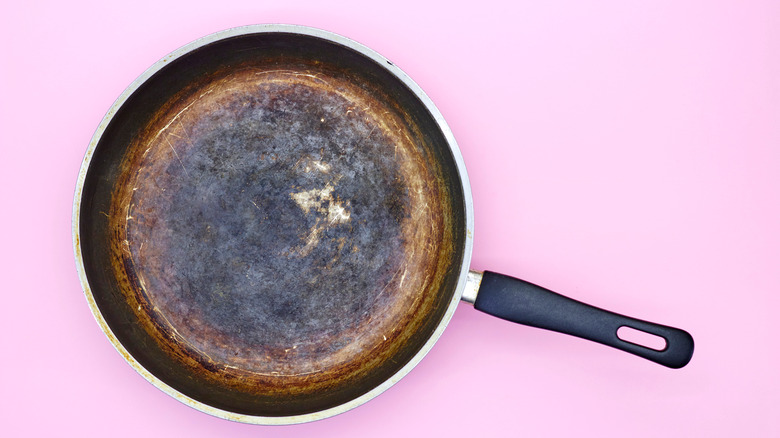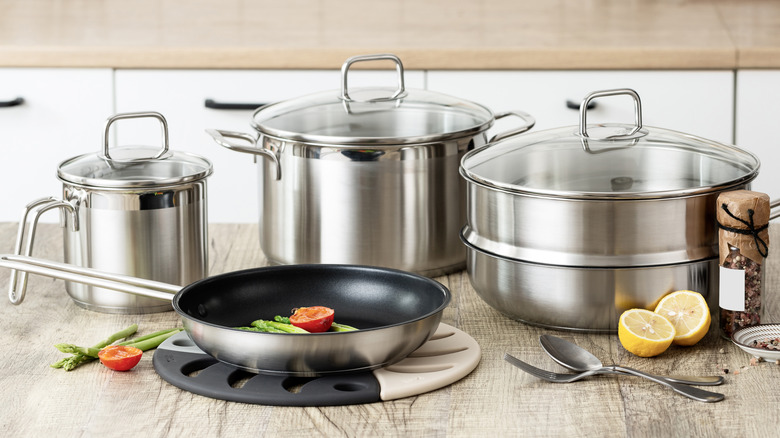When You Should Ditch Nonstick Skillets For Stainless Steel
Whether you are purchasing your first set of pans to set up your kitchen or are in the market for a new one for a recipe, pots and pans are an investment you shouldn't need to replace often. Regardless if you decide on stainless steel, nonstick, cast iron, or enamel, well-built pans should have a heavy bottom that distributes heat evenly and resist warping.
Developed for kitchen application in the 1960s, aluminum pots and pans were coated with polytetrafluoroethylene (PTFE), more commonly known as Teflon. They became a popular choice for home cooks since food doesn't stick, making them easy to clean. The nonstick coating also became an obvious choice for home cooks looking to cut fat from recipes since the pans require little butter or oil to cook in.
According to Healthline, until 2013, Teflon pans contained a chemical called perfluorooctanoic acid (PFOA), which was linked to severe health concerns, including thyroid disorders, chronic kidney disease, liver disease, testicular cancer, infertility, and low birth weight in newborns. Although the chemical has since been removed, Teflon-coated nonstick pans may still pose a health risk if not used properly.
According to Food Network, nonstick pans and stainless steel pans serve a purpose in the kitchen, and avid home cooks will need both in their cooking. While stainless steel pans are a kitchen workhorse, there are applications in the kitchen made easier with a nonstick surface, and here's when you should use them.
When to use nonstick pans
Cooks have a few choices in nonstick cookware these days. In addition to the more controversial Teflon-coated pans, there is ceramic-coated cookware that's surface is derived from sand, eliminating the risk of dangerous fumes. According to Cook's Illustrated, nonstick pans are ideal when cooking delicate foods, including eggs and fish, when the cooking temperature remains relatively low. Pancakes and crepes, cooked over low to medium heat, perform well on nonstick surfaces, even if the first one always goes in the trash.
Nonstick is not recommended if a recipe calls for high heat, over 400 degrees. Steaks and dishes that require a sear should not be prepared in nonstick pans. The high heat will erode the pan's surface, making stainless steel or cast iron much better choices. Acidic foods like tomato sauce can erode the pan's coating, so make Sunday's gravy meat in another pot, per Food Network.
Nonstick pans should not be preheated dry. Always add oil or butter to the pan first, and avoid non-stick cooking sprays. They create a coating on the pan which builds up and is hard to remove. To keep the surface of nonstick pans intact, wooden, silicone, and plastic utensils are recommended. Metal may scratch the surface, eliminating its nonstick properties. Pans with worn-out surfaces or scratches should be replaced, and even the best-cared-for nonstick pan will wear out over time, unlike a well-made stainless steel or cast iron pan, which can be handed down to the next generation.

